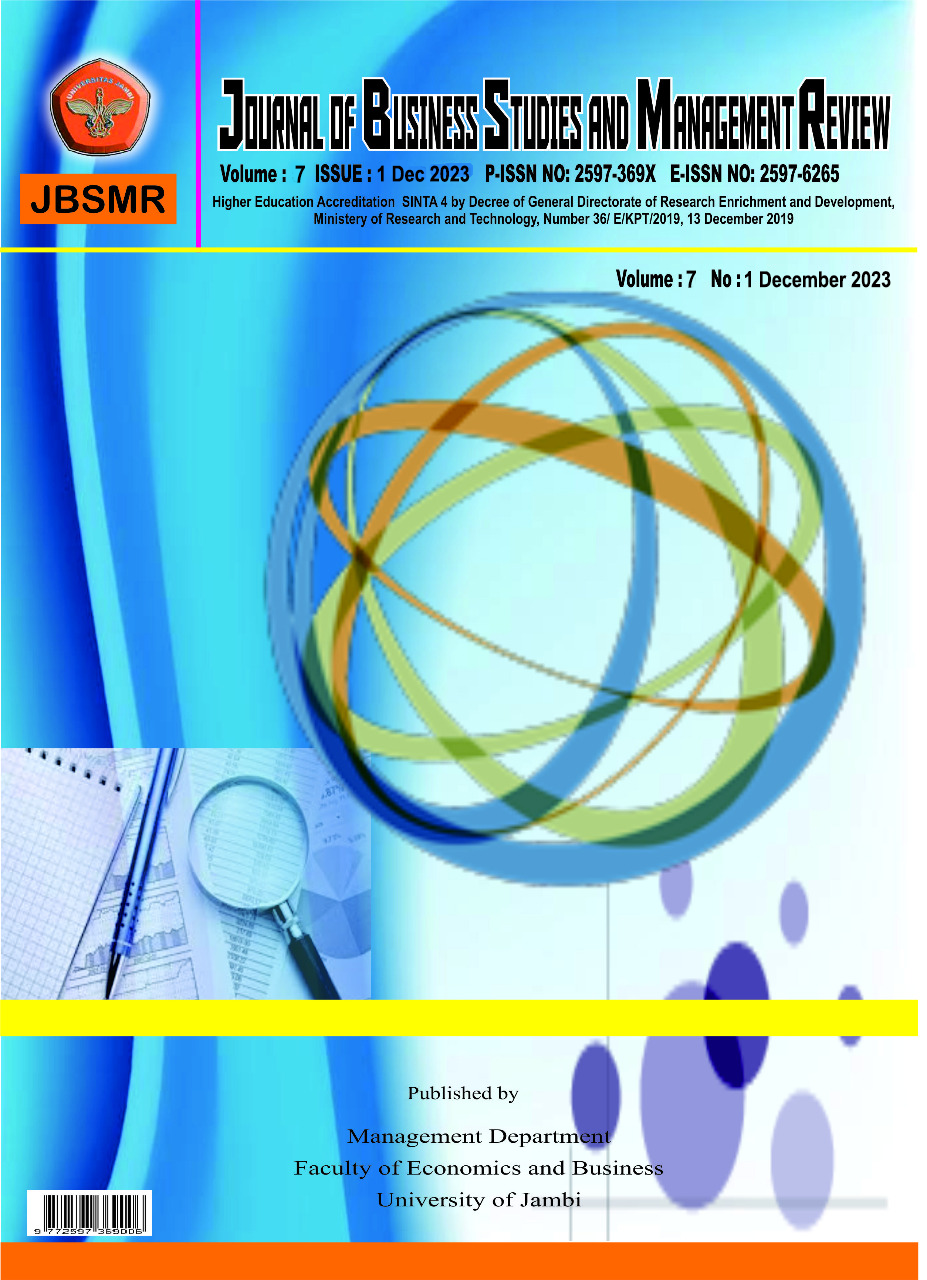BOOK REVIEW OF POWER IN ORGANIZATIONS BY JEFFREY PFEFFER
DOI:
https://doi.org/10.22437/jbsmr.v7i1.28360Keywords:
Power in OrganizationsAbstract
This book initiated “new wave†organizational studies that begin to edit, prune, apply, and synthesize what we have to see what we do not have yet, what we have too much of, and what we agree on as the basics. What makes this assessment plausible is the fact that Pfeffer has shown that the several perspectives now dotting the field can converge more strongly on a problem than mere lists of properties can. Pfeffer applies multiple perspectives simultaneously to a durable puzzle in organizations and shows not only that power is less puzzling than we thought but also that all perspectives we are currently working with have something to say about how that puzzle can be untangled most meaningfully. In doing so, Pfeffer has made a major contribution in the form of an important book.
Downloads
References
Astley, W. G., & Sachdeva, P. S. 1984. Structural sources of intraorganizational power: A theoretical synthesis. Academy of Management Review, 9: 104-113.
Bennis, Warren G., N. Berkowitz, M. Affinito and M. Malone 1958 "Authority, power and the ability to influence." Human Relations, 11: 143-156.
Dahl, R. A. 1957. The Concept of Power. Behavioral Science, 2: 201-215.
Dahlstrom, E. 1966 "Exchange, influence, and power." Acta Sociologica, 9: 237-284.
Emerson, R. E. 1962 "Power-dependence relations." American Sociological Review, 27: 31-41.
Handoko, H. 1987. Book Review # 2: Power in Organizations, by Jeffrey Pfeffer. In Book Review of Organizations and Environments, by Howard E. Aldrich.
Harsanyi, John C. 1962 "Measurement of social power, opportunity costs, and the theory of two- person bargaining games." Behavioral Science, 7: 67-80.
Hickson, D. J., Hinings, C. R., Lee, C. A., Schneck, R. E., & Pennings, J. M. 1971. A ‘strategic contingencies’ theory of intraorganizational power. Administrative Science Quarterly, 16: 216-229.
March, James G. 1955 "An introduction to the theory and measurement of influence." American Political Science Review, 49: 431- 450.
Meyer, M. W. 1983. Reviewed Work(s): Power in Organizations, by Jeffrey Pfeffer. Administrative Science Quarterly, 28(2): 301-303.
Pfeffer, J. 1981. Power in Organizations. Massachussets: Ballinger Publishing Company.
Pfeffer, J. & Salancik, G. R. 1977b. Organizational Context and the Characteristics and Tenure of Hospital Administrators. Academy of Management Journal, 20: 74-88.
Perrow, C. 1970. Departemental power and perspective in industrial firms. In M. N. Zald (Ed.), Power in Organizations: 59-89. Nashville, TN: Vanderbilt University Press.
Provan, K. G. 1980. Recognizing, measuring, and interpreting the potential/enacted power distinction in organizational research. Academy of Management Review, 5: 549-560.
Weick, K. E. 1982. Reviewed Work(s): Power in Organizations, by Jeffrey Pfeffer. American Journal of Sociology, 88(3): 605-608.
Welbourne, T. M., & Trevor, C. O. 2000. The roles of departemental and position power in job evaluation. Academy of Management Journal, 43 (4): 761-771.
Wrong, Dennis H. 1968 "Some problems in defining social power." American Journal of Sociol- ogy, 73, 673-681.
Yukl, G. 1989. Leadership in organizations. New Jersey: Prentice Hall
Downloads
Published
How to Cite
Issue
Section
License
Copyright (c) 2023 Nur Hasanah

This work is licensed under a Creative Commons Attribution 4.0 International License.

This work is licensed under a Creative Commons Attribution 4.0 International License.





.png)




